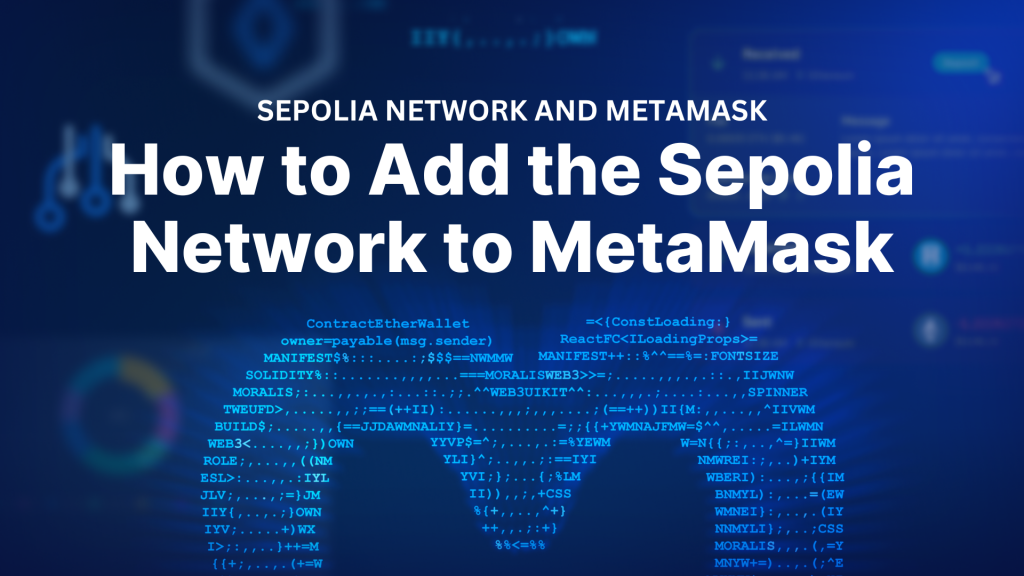
When developing decentralized applications (dapps) on Ethereum, you must pay gas fees to ensure your dapp works smoothly. As such, when developing dapps, it doesn’t make sense to do so directly on the mainnet due to potentially high costs. Fortunately, this is where the Sepolia testnet enters the equation, providing you with a safe and secure environment for testing your Web3 projects for free. However, if you want to interact with this network, you must add the Sepolia testnet to your Web3 wallet. And if you don’t know how to do so, then you’re precisely where you need to be. In this article, we’ll provide you with a complete guide on how to add the Sepolia network to your MetaMask wallet in no time!
Overview
In today’s article, we’ll kick things off by jumping straight into the action and showing you how to add the Sepolia network to your MetaMask wallet. From there, if you want to take it to the next level, we’ll dive into Sepolia development. In doing so, we’ll start by returning to basics and explaining the intricacies of the testnet. We will also explore Sepolia faucets and cover how you can get free testnet tokens in no time. Lastly, we’ll introduce you to Moralis – the easiest way to build and test dapps on the Sepolia testnet.
Moralis is the industry’s #1 Web3 API provider, and with our premier interfaces, you can build dapps faster and smarter. As such, when working with Moralis, you can beat your competition and save a lot of development time and resources.
So, if you’re serious about building dapps, don’t forget to sign up with Moralis. You can create an account for free, and you’ll gain immediate access to all our industry-leading Web3 APIs!
Now, without further delay, let’s show you how to add the Sepolia network to MetaMask!
How to Add the Sepolia Network to MetaMask
Nowadays, you don’t need to add the Sepolia network to MetaMask, as your account automatically features the testnet by default. Consequently, you simply need to switch from the Ethereum mainnet to Sepolia, which is super easy!
So, how do you switch your MetaMask network from Ethereum to Sepolia?
Start by launching MetaMask and click on the drop-down menu at the top left:
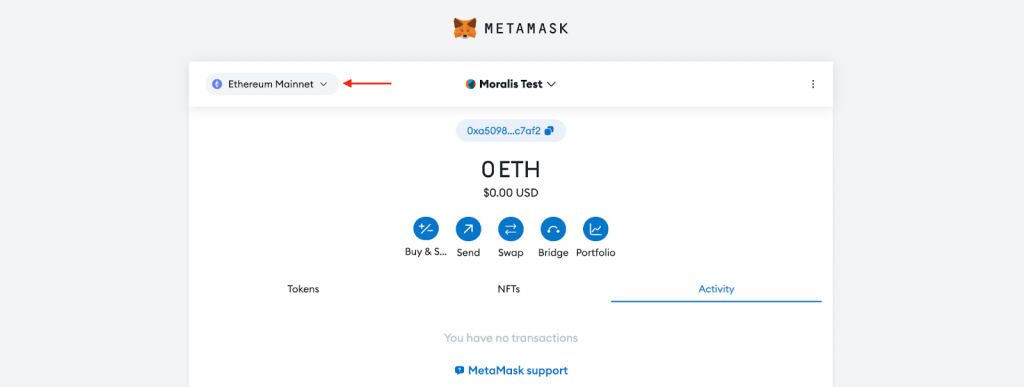
Next, toggle the ”Show test networks” button:
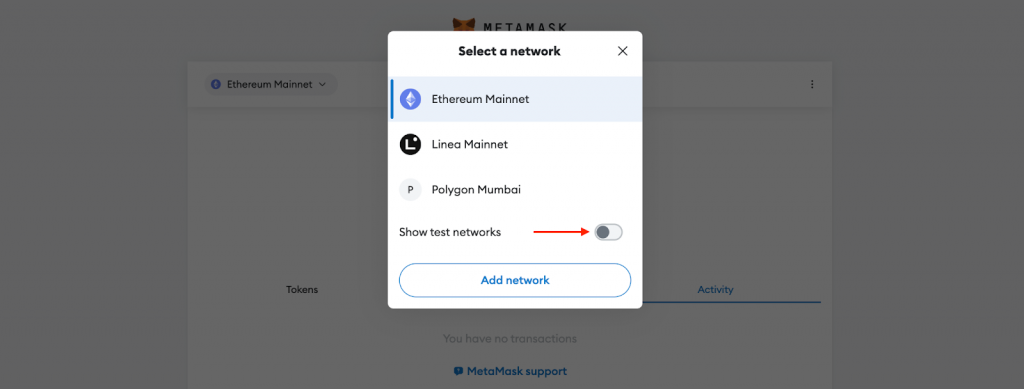
Lastly, click on the ”Sepolia” alternative to change your MetaMask network:
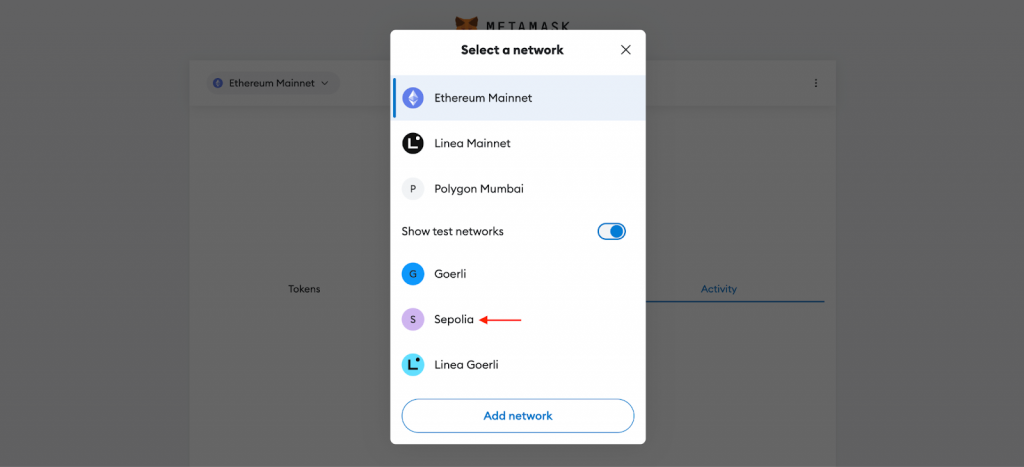
And that’s it; you should now have switched your MetaMask network from the Ethereum mainnet to Sepolia:

From here, you can start testing your dapps and smart contracts on the Sepolia testnet in no time!
Also, if you want to add the Sepolia testnet manually to another wallet, then here are the network details you’ll need:
| Sepolia Network | |
| Network Name: | Sepolia test network |
| New RPC URL: | https://sepolia.infura.io/v3/ |
| Chain ID: | 11155111 |
| Currency Symbol: | SepoliaETH |
| Block Explorer URL (Optional): | https://sepolia.etherscan.io |
Now, if you’d like to learn more about the easiest way to build and test dapps on the Sepolia testnet, join us in this article as we introduce you to the basics. And to kick things off, let’s start by covering the ins and outs of Sepolia!
What is the Sepolia Testnet?
Sepolia is – along with Holesky – one of the main testnets of the Ethereum ecosystem. The Sepolia testnet was initially introduced in October 2021, and it’s a proof-of-stake (PoS) network that’s a complete replica of the Ethereum mainnet. Consequently, it provides an accurate and safe environment for you and other Ethereum developers to test your dapps and smart contracts!
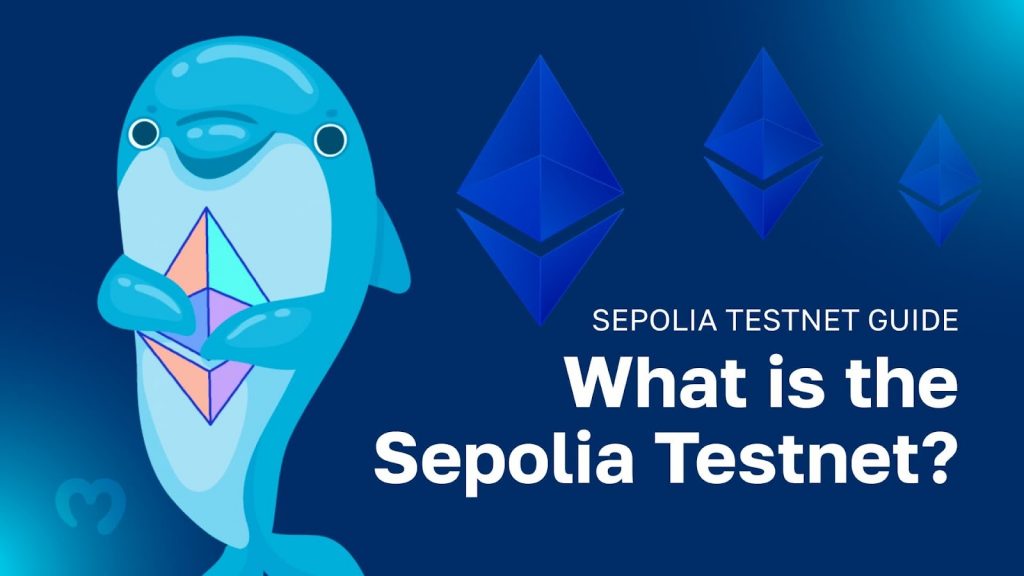
When Sepolia launched back in 2021, the network originally featured a proof-of-work (PoW) consensus mechanism. However, during The Merge, Sepolia joined Ethereum’s Sepolia Beacon Chain. In doing so, Sepolia – much like the Ethereum mainnet – switched from its PoW consensus mechanism to PoS. This ensured that Sepolia still mimicked the Ethereum mainnet and remained a suitable testing environment for dapps and smart contracts.
However, what exactly is the purpose of the Sepolia testnet? And why do you need it in the first place?
You generally have to pay gas fees when interacting with a blockchain. And on a network like Ethereum, they can become quite expensive. Consequently, building and testing dapps directly on the mainnet doesn’t make sense, as it can become quite expensive. Fortunately, this is where testnets like Sepolia enter the equation!
Even though Sepolia mimics the Ethereum mainnet, the network still features its own testnet token. This token is used to pay for transactions on Sepolia; however, the big difference is that you can acquire these tokens for free using a Sepolia faucet. And we’ll explain what they are in the following section.
If you want a more detailed breakdown of this network, check out our Sepolia testnet article. Also, you can explore other testnets – including Goerli and Holesky – in our Ethereum testnet guide.
What is a Sepolia Faucet?
Sepolia faucets are websites or applications that allow you to seamlessly acquire free Sepolia testnet funds. They typically feature straightforward user interfaces where you input your wallet address, hit a button, and get testnet tokens in return.
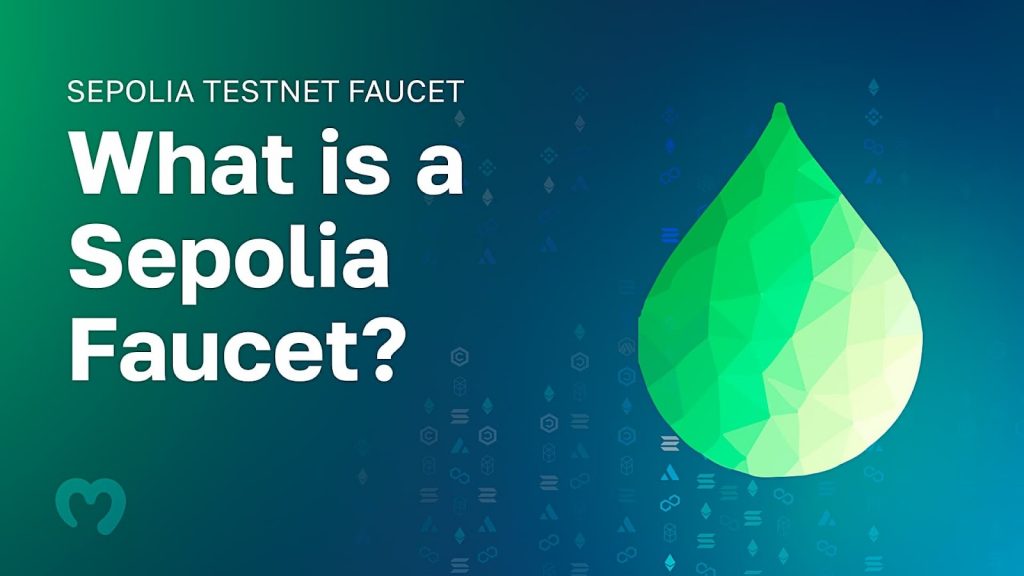
After claiming testnet tokens using a Sepolia faucet, you can then use the funds to pay for transactions on the network. Consequently, they give you the opportunity to test your dapps and smart contracts without having to commit any real Ethereum funds!
You can check out our Sepolia faucet guide if you want a more detailed breakdown of these tools and how to use them to get free tokens!
Moralis’ Faucets Page: Easiest Way to Load Up MetaMask with Sepolia Network Tokens
Finding legit faucets has – from a conventional perspective – been somewhat challenging. Many faucets require tweet verifications or account signups. In the worst-case scenario, some bad-faith actors might even be looking to steal your wallet credentials. To solve this issue, we launched Moralis’ crypto faucets page!

This page features a curated list containing only pure faucets. There are no signups required. There is no need to hand out personal data. And no BS. All you have to do is paste your wallet address to receive free testnet tokens!
In this list, you’ll find a lot of faucets for ten+ blockchain networks. This, of course, includes a Sepolia faucet that you can use to load up your MetaMask account with Sepolia network funds in a heartbeat!
If you want to explore some of the other faucets, check out the following guides:
Now that you know what the Sepolia network is and how to load up your MetaMaks account with free testnet tokens, you’re ready to get going with your projects. And if you’d like to explore the easiest way to build and test dapps on the Sepolia testnet, join us in the next section as we introduce you to the industry’s #1 API provider: Moralis!
Introducing Moralis: Easiest Way to Build Dapps
Moralis is an industry-leading Web3 API provider, and our enterprise-grade interfaces make Web3 development as accessible as Web2. As such, when working with Moralis, you can easily build everything from Web3 wallets to decentralized exchanges (DEX) without breaking a sweat!
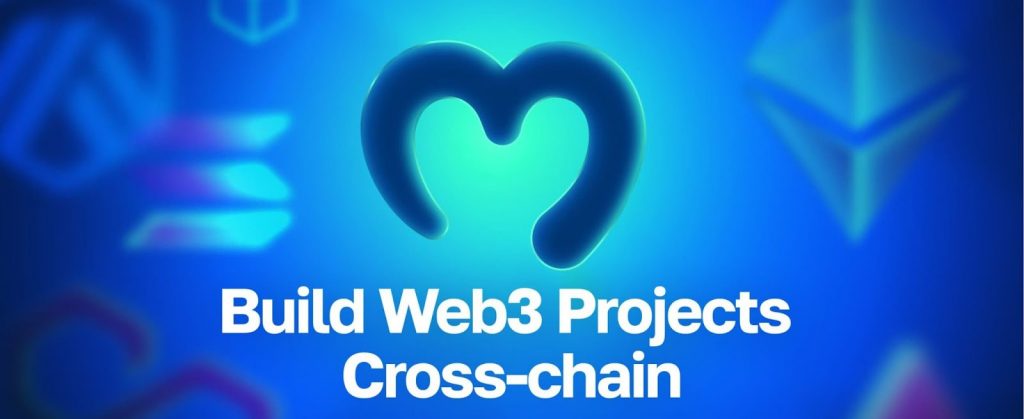
So, why should you use Moralis?
To answer this question, let’s look at three prominent benefits of Moralis’ Web3 API suite:
- Multiple APIs: Moralis’ API suite consists of multiple industry-leading interfaces tailored for specific use cases. Some prominent examples include the Wallet API, Token API, NFT API, Streams API, etc. Consequently, no matter what project you’re building, you’ll find an API that suits your needs!
- Cross-Chain Compatability: All of Moralis’ interfaces are chain agnostic. Consequently, you can effortlessly build cross-chain compatible dapps when working with Moralis. Some supported networks include Ethereum, Polygon, BNB Smart Chain, Arbitrum, etc. You can also use Moralis’ APIs to build and test projects on various testnets, including Sepolia.
- Top Performance: Choose any metric you’d like – whether you want to measure by speed, coverage, or features – Moralis’ Web3 APIs blow the competition out of the water:
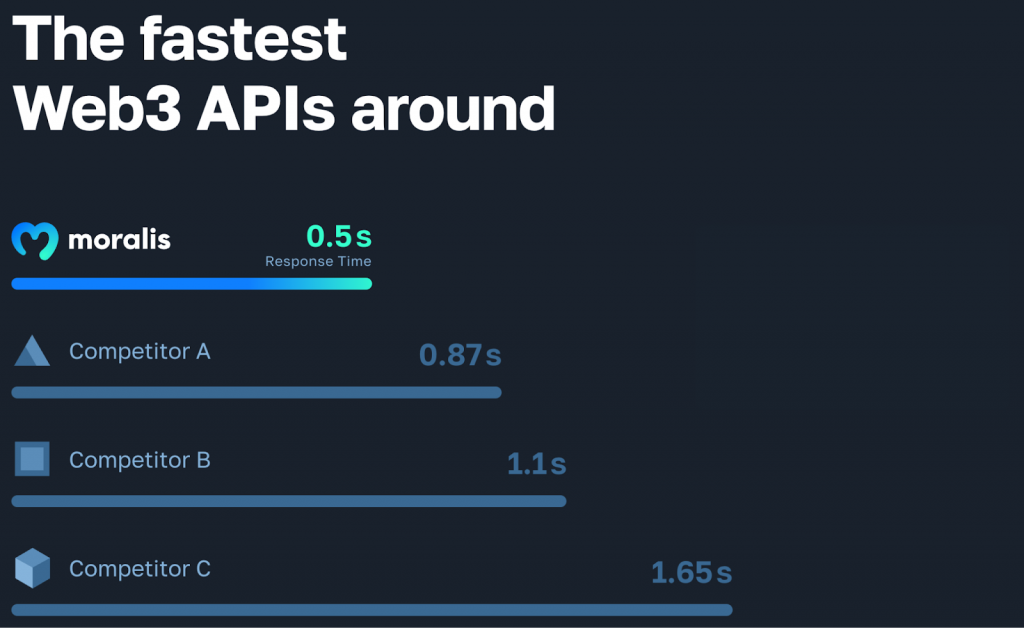
With an overview of Moralis and why you should be using our industry-leading suite of Web3 development tools, let’s look at three of our most prominent APIs in the following sections!
NFT API
Moralis’ NFT API is the industry’s most powerful tool for NFT data. The NFT API supports more than three million NFT collections, ranging from established projects like Doodles and CryptoPunks to tokens that dropped just a few seconds ago!
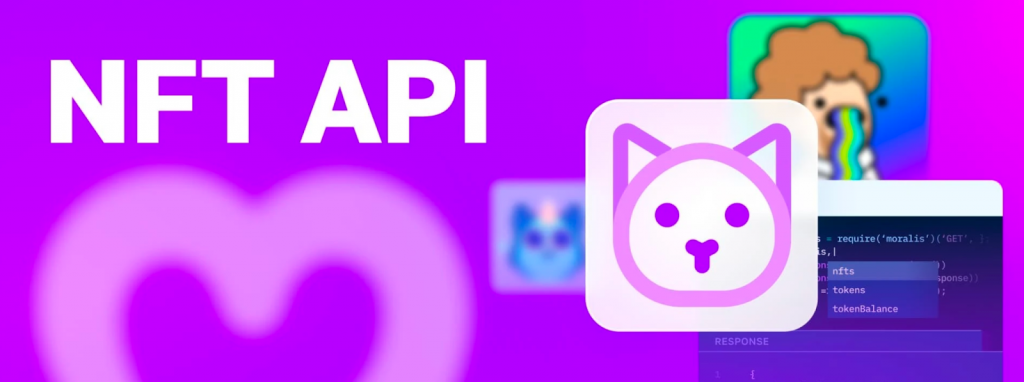
With only single lines of code, you can effortlessly get all the NFT data you need. This includes real-time transfers, metadata, on-chain pricing data, image previews, and much more. With this information, you can seamlessly build any NFT project you can imagine and test it on the Sepolia network.
So, what does the NFT API do?
- Real-Time Data: Get real-time NFT transfer data, ownership information, on-chain prices, and more.
- Historical Data: Fetch historical NFT data, including transfer data, last sale prices, lowest sold-for price, etc.
- Enriched Metadata: Access normalized and fully enriched metadata for individual tokens and NFT collections.
- Spam Detection: The NFT API provides advanced spam detection, protecting your platforms from undesirable NFTs.
- Optimized Image Previews: Leverage dynamically sized image previews for all use cases.
- And much more!
Streams API
The Streams API is the ultimate tool for monitoring blockchain networks and crypto addresses in real-time for critical events. With only a few lines of code, you can set up streams to receive customizable updates straight to your dapps’ backend via webhooks whenever something relevant happens on-chain!
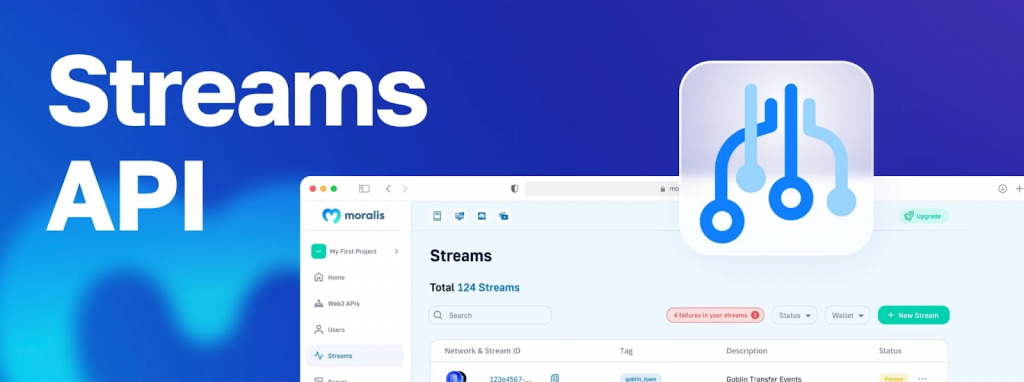
The Streams API lets you track all types of events, tokens, wallets, smart contracts, etc. Also, the interface supports 44 million addresses across all major blockchain networks and testnets, including Sepolia.
This makes the Streams API the perfect tool for getting user asset transfers in real-time, notifying your users automatically about important Web3 events, building dapps requiring real-time data, such as an on-chain wallet tracker, and much more!
So, why should you be using the Steams API?
- Customization: The Streams API is the industry’s most customizable real-time API for blockchain data. As such, you can leverage this interface for any custom use case you can imagine.
- Build Faster: Moralis’ Streams API monitors, ingests, and tailors data so you don’t have to. So, when working with this tool, you don’t have to reinvent the wheel and can go to market faster.
- Scalability: The Streams API is built for scale. As such, when your projects grow, you don’t have to worry, as this interface has no trouble handling the increase in traffic.
Wallet API
Moralis’ Wallet API is the industry’s premier tool for building Web3 wallets and integrating wallet functionality into dapps. The interface has an extensive array of features, provides unparalleled scalability, and is highly flexible. Moreover, it supports more than 500 million addresses on all major EVM chains!
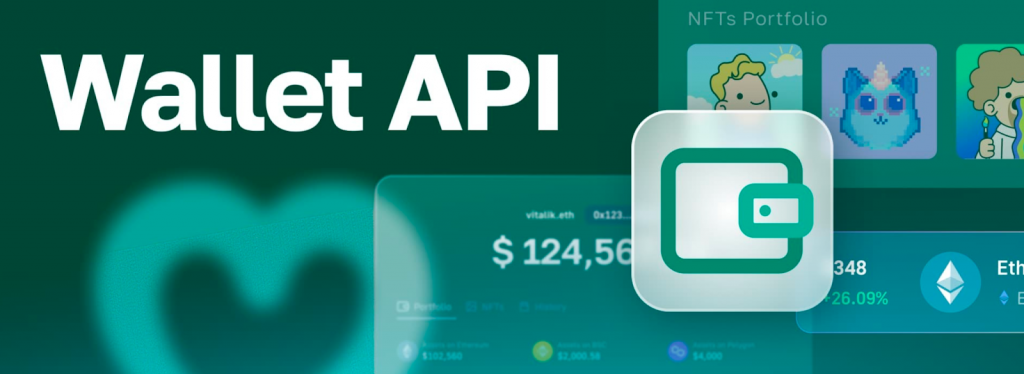
So, what are some of the Wallet API’s most prominent features?
- Real-Time Wallet Data: Query real-time wallet data, including transfers, balances, native transactions, and much more.
- Historial Data: Get historical balances, transfers, transactions, etc., with only single lines of code.
- Address Labels: All transaction and transfer endpoints provide fully enriched public address labels.
- Account Abstraction Enabled: The Wallet API supports ERC-4337 account abstraction, allowing you to fetch on-chain data from smart contract wallets.
- Profile Data: Access the age, check the activity, and much more for any wallet.
- And more!
If you want to explore all our industry-leading interfaces, check out our Web3 API page!
Summary: How to Add the Sepolia Network to MetaMask
In today’s article, we set out to show you how to add the Sepolia network to MetaMask. However, in doing so, you learned that Sepolia is added to MetaMask by default. As such, all you had to do was change the network by clicking on the drop-down menu at the top left, hit the ”Show test networks” button, and select ”Sepolia”:
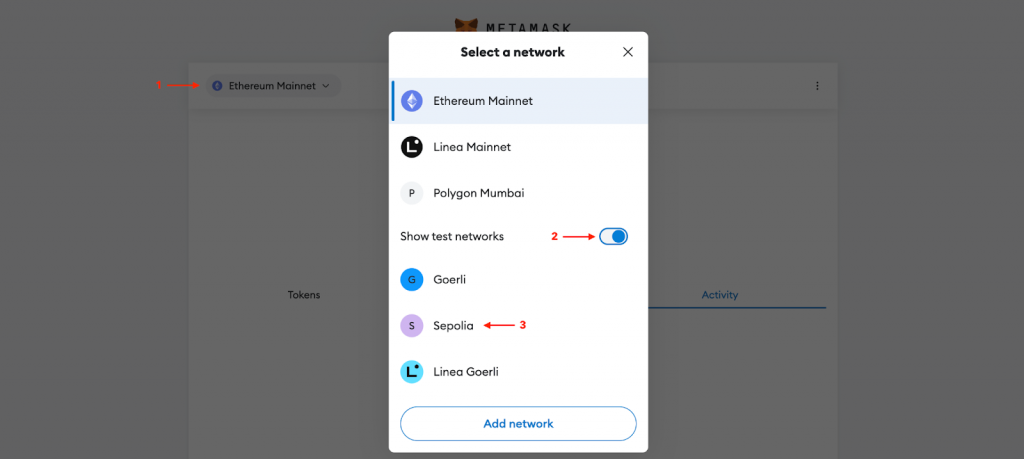
As such, if you have followed along this far, you now know how to change your MetaMask network to Sepolia!
If you liked this guide on how to add the Sepolia network to MetaMask, consider reading other guides here on the Web3 blog. For instance, check out the best Etherscan API alternative, the #1 crypto wallet history API, or learn how to create a real-time wallet tracker!
Also, if you want to take your Web3 development game to the next level, don’t forget to sign up with Moralis. You can set up your account free of charge, and you’ll gain immediate access to all our industry-leading development tools!
